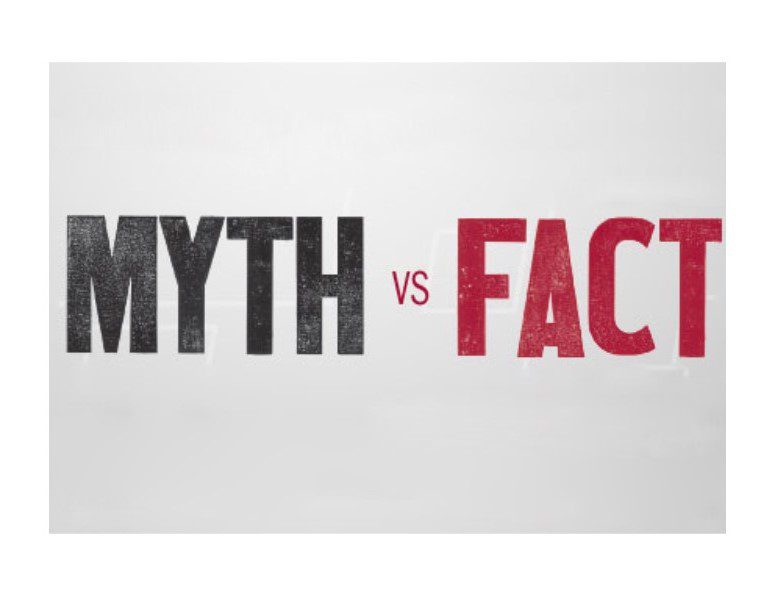Background: The Trump Administration’s “Buy American Hire American” program highlights the need to restore mandatory country-of-origin labeling (COOL) for beef. Unfortunately, the importers and all their entrenched Washington, D.C., lobbyists and insiders are spreading false information to dissuade the President from restoring this common-sense initiative that will profoundly benefit America’s farmers and ranchers and America’s consumers.
Myth: The U.S. cannot disregard the WTO’s ruling against COOL.
Truth: The U.S. has yet to seek a diplomatic resolution for COOL as it has in other WTO cases. Also, the WTO ruling was blatantly conflicted because Ricardo Ramírez-Hernández, a Mexican national and attorney in service to Mexico, was the Presiding Member of the Appellate Body that, unsurprisingly, ruled in favor of Mexico and Canada.
Myth: If consumers wanted COOL, the marketplace would voluntarily apply COOL labels.
Truth: This is the problem: Importers are voluntarily applying the “Product of USA” label, but they are putting it on imported beef products that receive only minor processing in the U.S. and on beef derived exclusively from foreign cattle. Thus, the American cattle farmers’ and ranchers’ trademark is being stolen by importers.
Myth: COOL harms American cattle producers by adding costs to the beef supply chain.
Truth: When COOL for beef was fully implemented from early 2013 through 2015, American cattle producers received historically high prices for their cattle and their profitability, as measured by returns per bred cow, was also at historical highs. In fact, USDA data show that returns per bred cow dropped 64% since COOL was repealed.
Myth: All beef is the same regardless of where the animal was born and raised.
Truth: This is false as other countries do not have identical environmental, production and food safety standards as the U.S. It is also irrelevant because a label stating “Born, Raised and Harvested in the USA” distinguishes the product as one produced entirely under the United States’ food safety system and by America’s farmers and ranchers.
Myth: COOL does not need to be mandatory as producers can voluntarily label their beef.
Truth: No, they cannot. In the multi-segmented cattle-to-beef supply chain, cattle producers sell live cattle to the packers that subsequently transform those cattle to beef. Thus, it is the packer and not the producer that can decide whether to label and, obviously, it is not in the packers’ interest to inform consumers as to the true origins of their beef.
Myth: COOL disrupts the “integrated North American beef supply chain.”
Truth: A handful of importers choose to purchase imported beef and cattle rather than American beef and cattle and they enjoy windfall profits by passing these cheaper, undifferentiated imports off to unsuspecting consumers as if they were American grown. They also use undifferentiated imports to fill any supply gaps, thus eliminating opportunities to rebuild the U.S. cattle industry and attract new entrants to the ranching sector. COOL will end the importers’ exploitation of the lack of transparency in the market and allow the marketplace to determine the value of beef produced in each North American country.
Myth: COOL cannot be implemented without a national animal identification system.
Truth: This is false. COOL was effectively implemented from early 2013 through 2015 without a mandatory identification system. It relied on producer affidavits and a presumption of domestic origin (any animal not bearing a permanent foreign import marking can be none other than exclusively born and raised in the United States).
Myth: COOL requires the segregation of imported cattle and imported beef and such segregation is difficult and costly.
Truth: COOL does not require segregation but packers may choose to use the same protocols they employ for maintaining the identity of beef of differing quality grades, such as Prime, Choice, Select, etc.., and for beef eligible for certain branded programs, such as Certified Angus Beef, or natural or organic programs, all of which require product tracking throughout the beef manufacturing process after the animal is harvested. The beef packing industry is fully adept at identifying and tracking beef products based on a wide range of production-based criteria that are not observable in the product itself.
Myth: COOL is unconstitutional and its rules exceeded USDA’s statutory authority
Truth: The Washington, D.C. Appellate Court’s 2014 en banc decision in AMI et al. v USDA et al. upheld both the constitutionality and lawfulness of mandatory COOL for beef.






